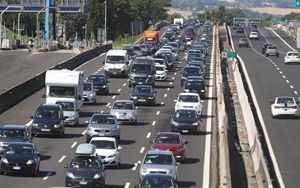(Finance) – Today Italians travel by car more di what happened before pandemic (+ 60%)but the the purchasing market is practically at a standstill and the fleet continues to age.
This is one of the main evidences that emerged from the research “The mobility that does not change – An Italy with two speeds, between those who embrace the new … and those who cannot yet afford it” conducted by Aniasa, the Confindustria mobility services association, and by Bain & Company.
The study analyzes the changes in the mobility habits of Italians, investigating the progress of the transition towards electrified mobility. To do this, he starts from an assumption: in recent months, Italians have returned to using cars massively, about 60% more than they did pre-pandemic (in January 2020), as certified by Apple’s Maps App. . The research carried out on 1,000 consumers further confirms this trend: the personal car is the means of transport used most often (from 69% in 2020 to 73% in 2021) and users are much more likely than in previous years to use the car sharing (from -54% in 2020, to -16% in 2021 to + 2% in 2022) and electric scooters (from -8% in 2021 to + 5% in 2022). At the basis of this newfound mobility is also the return to the workplace: while in 2019 people worked remotely on average only 0.8 days a week, the Covid brought this value to 2.6 in 2020, and then dropped back to 2.1 in 2021 and to just 1.4 days a week in 2022.
The research shows how, despite the newfound mobility, the automotive market is nevertheless struggling with the worst crisis since the 1970s. In 2021, registrations fell below 1.5 million units, with 2022 marking a contraction of 27% from the beginning of the year. The temporary market stoppage, however, may not be an absolute problem, given that Italy has one of the highest motorization rates in the world (670 cars per 1,000 inhabitants, about 1.5 cars per household). It is a pity, however, that the constant aging of the fleet continues to be recorded, passing from 2000 to today from an average age of 8.8 to 11.5 years. The answer to the need to modernize our mobility cannot come only from new forms of mobility (for example bike sharing and scooter), particularly widespread in the metropolitan context, where, however, only 15.5% of the fleet in circulation is present today.
The investigation also notes that cElectricity is slowly resurrecting, almost exclusively in the cities of Northern Italy and in corporate fleets. The “mobility gap” is increasing between those who can afford cars with new engines (SUVs and large cars) and those who cannot and rely on their old car. The rental, even for individuals, is a candidate to be engine of more sustainable mobility.
